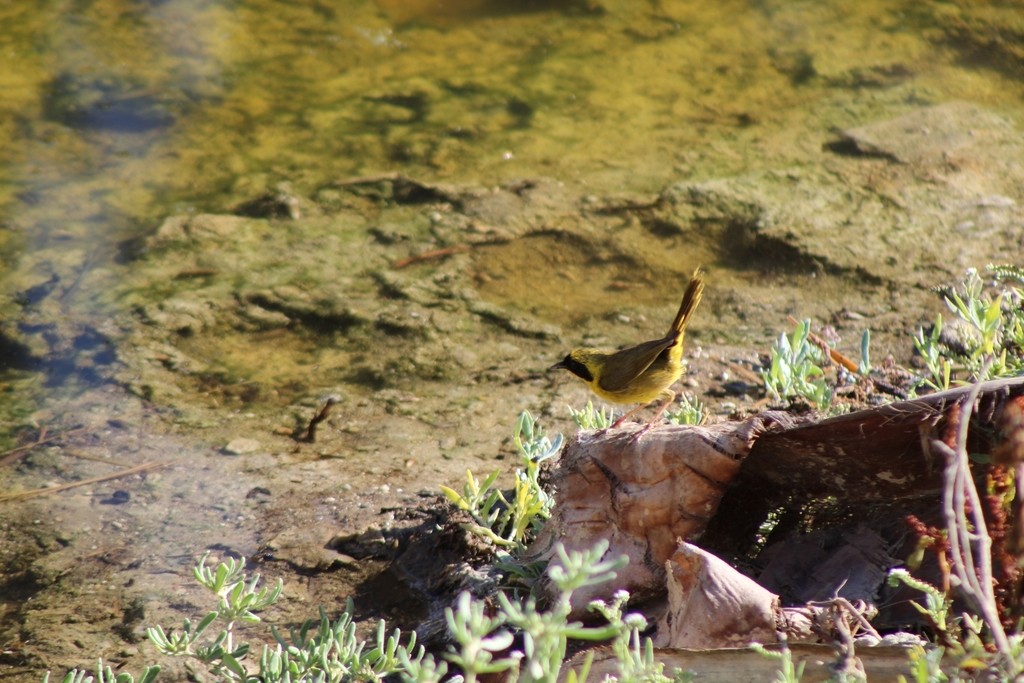Belding's Yellowthroat
A species of Yellowthroats Scientific name : Geothlypis beldingi Genus : Yellowthroats
Belding's Yellowthroat, A species of Yellowthroats
Botanical name: Geothlypis beldingi
Genus: Yellowthroats
Content
Description General Info
 Photo By jkingbird , used under CC-BY-NC-4.0 /Cropped and compressed from original
Photo By jkingbird , used under CC-BY-NC-4.0 /Cropped and compressed from original Description
Belding's yellowthroat (Geothlypis beldingi) is a New World warbler. It is a resident breeder endemic to the southern Baja California Peninsula (Mexico). It is closely related to common yellowthroat, Altamira yellowthroat and Bahama yellowthroat, with which it forms a superspecies, and was formerly considered conspecific. The breeding habitat is freshwater marshes and lagoons, usually with cattails. It builds a cup nest of dead cattails which is usually attached to low on the stem of a living cattail. It lays 2-4 eggs, usually 3. Like other yellowthroats it forages low in vegetation and feeds on insects and other small invertebrates. The Belding's yellowthroat is 14 cm long with an olive-green back and bright yellow belly. The adult male of the southern nominate race G. b. beldingi has yellow underparts, a black facemask and yellow forecrown. The female is similar, but lacks the black mask and has an olive crown. It is similar to Altamira yellowthroat, but separated from it by the width of Mexico. This race has been drastically affected by habitat loss, and is now restricted to several small marshes in southernmost Baja California [the estero at San Jose del Cabo and the lagoon at Todo Santos; August, 2007]. The male of the northern subspecies G. b.goldmaii has a pale belly and grey forecrown, making it very similar to some non-migratory southwestern races of common yellowthroat, which, however, do not overlap in range. It is larger and slightly brighter than the migratory races of common yellowthroat which winter in Baja California, and the male's mask extends further onto the nape than is the case with the visitors. This race is still fairly common, but its range is shrinking through habitat loss. The song of Belding's yellowthroat is a loud wichety wichety wichety wich, similar to that of common yellowthroat but deeper, fuller, and with some buzzes. The call is a soft jip, again similar to common yellowthoat. This species is named for Lyman Belding, a prominent Californian naturalist. 
Size
14 cm
Nest Placement
Ground
Feeding Habits
Belding's Yellowthroat primarily consumes insects and various invertebrates, foraging in underbrush and wetland vegetation. Its diet includes a varied range of prey, utilizing unique adaptations for searching food in dense habitats.
Habitat
Belding's Yellowthroat predominately inhabits freshwater marshes with abundant reeds, cattails, and bulrushes. These marshes are often situated along riversides. Belding's Yellowthroat can also be found in brackish coastal marshes and in mangrove ecosystems adjacent to coastal estuaries across broader geographical regions.
Dite type
Insectivorous
General Info
Feeding Habits
Bird food type
Species Status
VULNERABLE. Previously considered Critically Endangered. Restricted-range species: present in Baja California EBA. Global population no more than a few thousand at very most.
Scientific Classification
Phylum
Chordates Class
Birds Order
Perching birds Family
New world warblers Genus
Yellowthroats Species
Belding's Yellowthroat